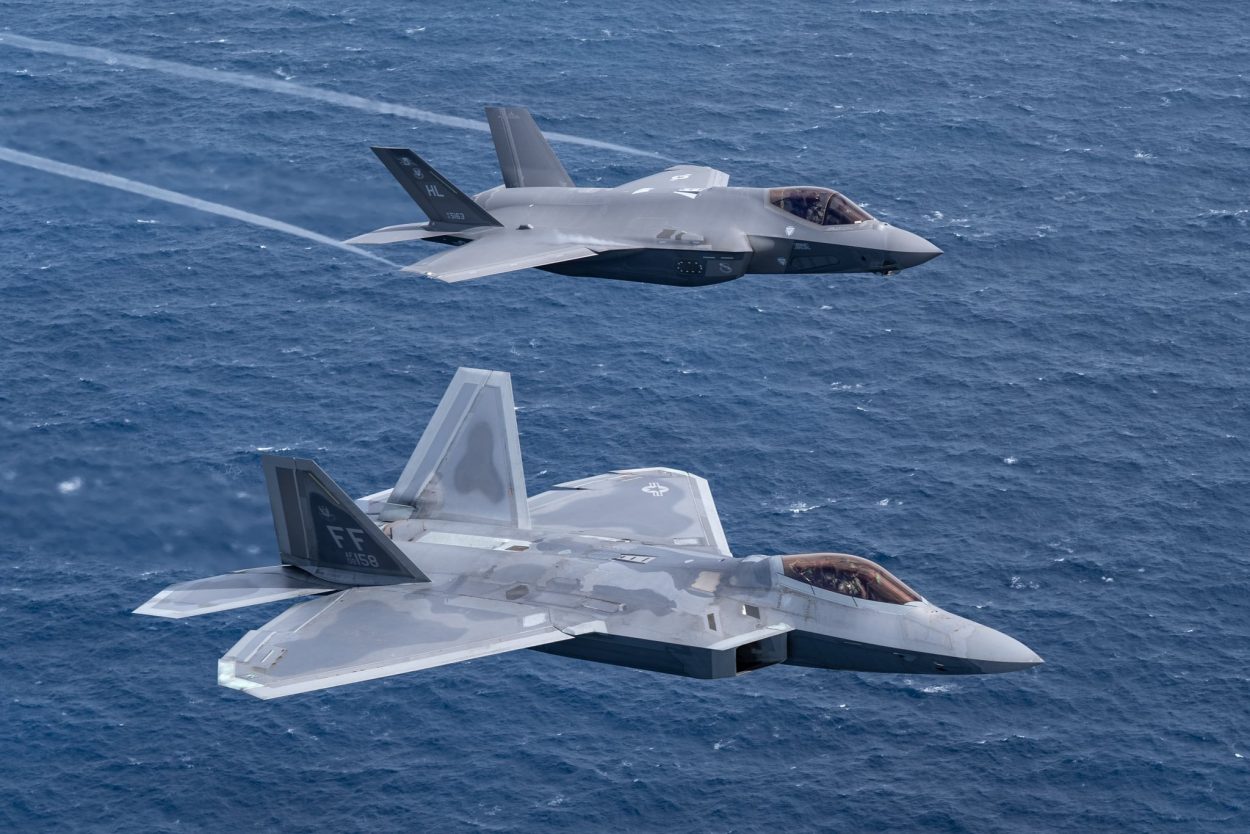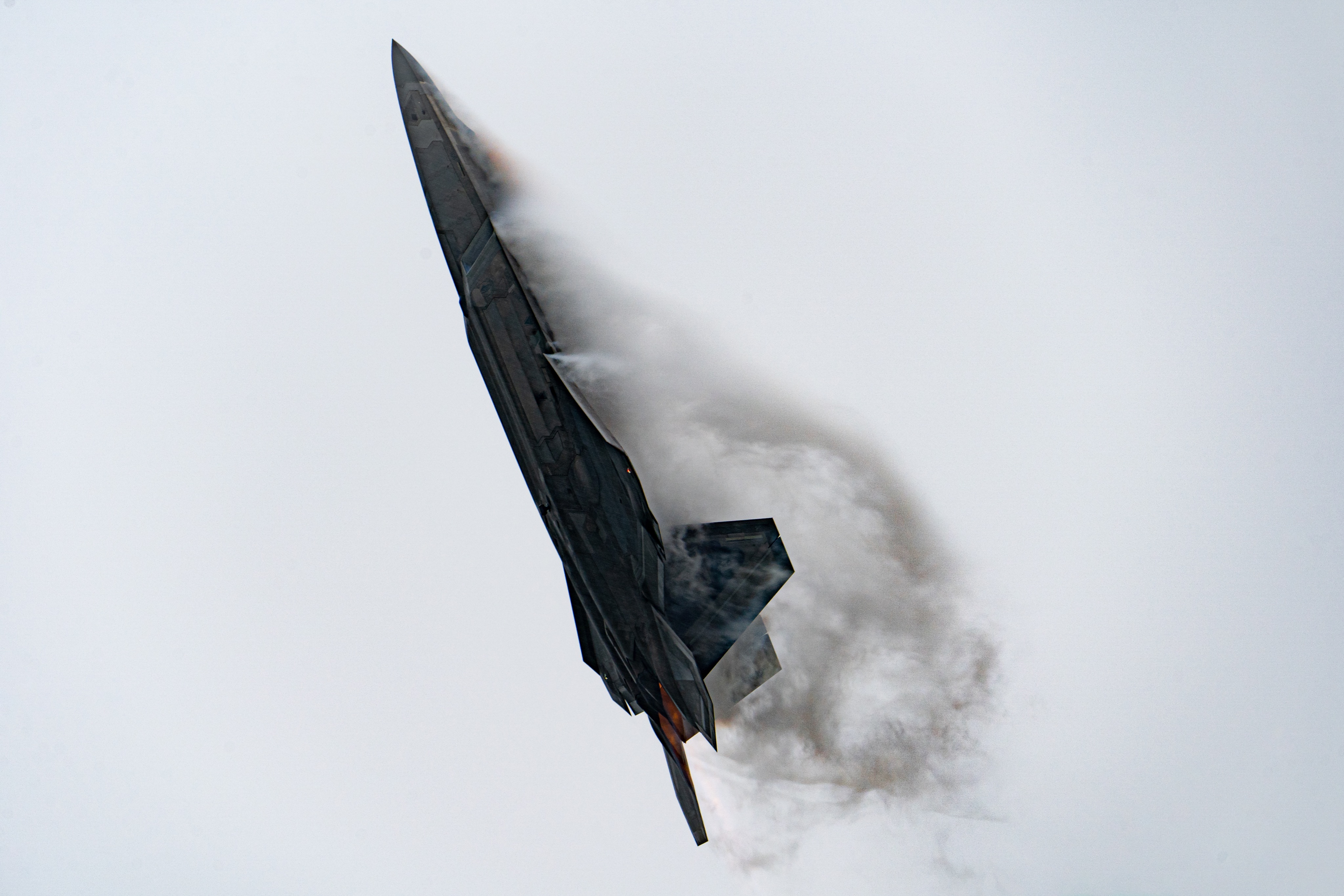The Lockheed Martin F-22 Raptor is one of the most dominant air superiority fighter jets in the world. This double-engine aircraft can outclass almost any adversary on the planet. Its strength is precisely what has prevented it from being sold to military forces outside the US.
LEAKED: Images Go Viral In The US After Russian-Origin Mi-17 Helicopter Gets Spotted On North California Farmland
Quite long ago, in a move to keep this mighty weapon to themselves, the US had marked the F-22 as “not for sale”. However, it did explore making an export variant of the Raptor once.
A Brief History Of Raptor
In the mid-1990s, Lockheed Martin, Boeing, and General Dynamics teamed up to develop an extremely advanced tactical fighter – the F-22. The warplane, intended as a replacement for the F-15, was to pack stealth, integrated avionics, and maneuverability all in one.
The first production F-22 was unveiled on April 9, 1997; subsequently entered service in 2005. However, in the following years, the program courted controversies regarding costs and its suitability in a post–Cold War era.

After the collapse of the USSR, the next generation of Soviet fighters that the Raptor had been intended to dominate in aerial combat didn’t materialize. Thus, the US Department of Defense decided to end the aircraft’s production. The USAF received the last Raptor in 2012.
The aircraft made its combat debut in September 2014 when it carried out coordinated strikes with other fighter jets and bombers in Syria.
Why The Export Ban?
The US had determined, way back in 1997, that the F-22 Raptor couldn’t be exported even to allied nations. The government, and specifically Congressman David Obey, worried that the sensitive and secretive technologies that went into this mighty warplane could be found and reverse-engineered by adversaries of the US.
The stealth characteristics unique to the plane, in particular, had to be guarded against enemy hands.
This was the official reason given. However, the unstated reason is believed to be that the US was suspicious of Israel transferring the technology associated with the Raptor to Russia or China.
Since Washington couldn’t single out Tel Aviv and sour its diplomatic ties, it instituted an export ban that put this aircraft out of the reach of all potential buyers.
This was done through the Obey Amendment. This consisted of a single sentence added to the 1998 Department of Defense Appropriations Act. The Obey Amendment read, “none of the funds made available in this Act may be used to approve or license the sale of F-22 advanced tactical fighter to any foreign government”.
The Demand For F-22
The Raptor has a smaller radar cross-section compared to more modern planes such as the F-35. The former has much greater speed, courtesy of its twin thrust-vectoring F119 turbofan engines.
Not only do these engines give the F-22 the ability to cruise at supersonic speeds without afterburners, but also provide supermaneuverable flight characteristics. However, this aircraft lacks the modern computer systems and the more cost-efficient radar-absorbent materials (RAM) found in the F-35.
Still, the Raptor beats the less-expensive and more flexible general-purpose F-35 in air-to-air combat. It was, thus, in high demand.

Potential customers of the F-22 included Israel, Australia, South Korea, Singapore, and the especially persistent Japan. Potential benefits to the US military industry and greater interoperability with allied forces might have been strong reasons for Washington to explore the possibility of an export variant of the Raptor.
This consideration dates back to 2009 when lawmakers were discussing the prospect of directing the USAF to study the viability of an F-22 variant.
Declassified Export Briefing
The USAF has released a heavily redacted copy of the briefing that detailed what the study found. The work on the study started in December 2009.
It was led by the Special Programs Division of the Office of the Assistant Secretary of the Air Force for Acquisition. Similar studies had already happened in 1998 and 2006. In March 2009, Lockheed Martin had also carried out an independent internal export feasibility review.
The study team sketched out a notional export F-22. They derived this outline from the expected configuration of the last Raptors on order for the Air Force. The team explored cost considerations on the basis of two possibilities.
The first possibility was that the production of jets for Foreign Military Sales (FMS) would immediately follow the US Air Force’s final orders. The second was that the production line went dormant for a time and had to be restarted for FMS.
The former option had a total estimated cost of $8.3 billion. Quite some cost would be saved due to the Raptor production line not requiring restarting. Each jet would cost around $165 million apiece due to various efficiencies gained from continuous production.
The latter option assumed a two-year pause in Raptor production. In this case, it would cost approximately $11.6 billion, including a production run of 40 aircraft. The average unit cost of each plane was estimated at $232.5 million.
In this scenario, the F-22 export variant would be delivered 6.5 years after the formal contract would be inked.
Neither of these options included any estimates about impacts on cost from industrial or financial offsets on the production. Additional costs associated with training or other support requirements that customer countries would have were also left out from the study.
Creating an exportable F-22 variant in and of itself was noted to be a challenging task. This is because the plane wasn’t designed to be exported and is chock full of sensitive technologies.
‘Missile On Wheels’: US’ Vicious Idea Of ‘Stealthy ICBMs’ Now Adopted By One Of Its Fiercest Rivals In Asia
The fighter had at least 3 groups of systems that the US government had never allowed to fall into the hands of even an ally. The briefing also mentions that no software source code or software documentation of the Raptor is to be exported.
The briefing also addressed Lockheed Martin’s deep integration in the operation and sustainment of the US’ Raptor stock, noting that the Air Force’s paradigm must change to provide ‘Operational Sovereignty’ to the buyers.
So far, all studies regarding the F-22s exports have only remained studies as restrictions on its sales are still in place to date.
- Written by Shreya Mundhra/EurAsian Times Desk
- Follow EurAsian Times on Google News




